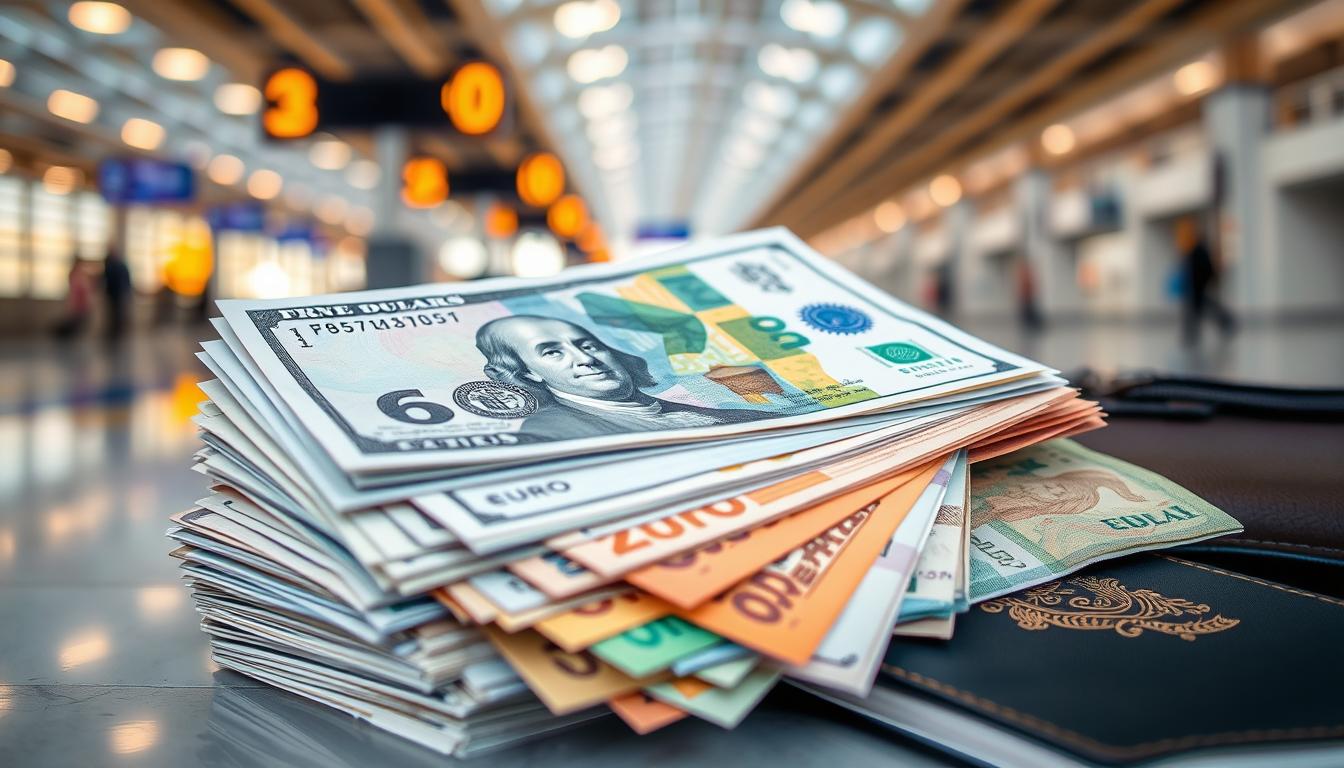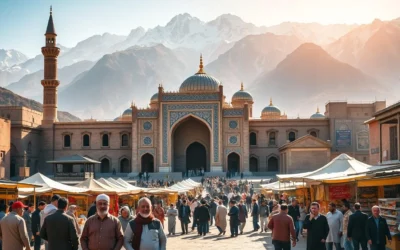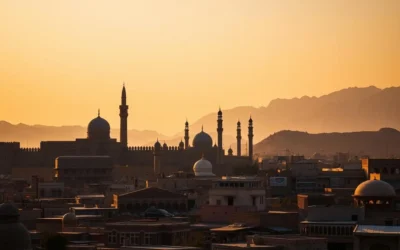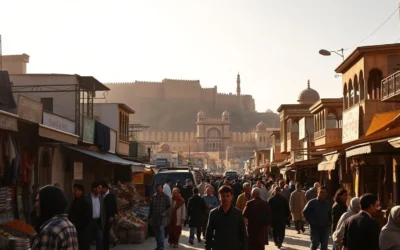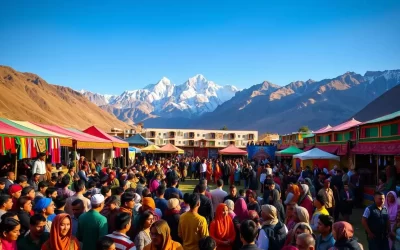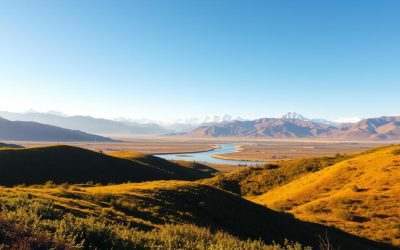✓ Accommodations✓ Flights✓ Rental Cars✓ Tours & Activities
Did you know that over 90% of transactions in this country are still conducted in cash? This fascinating fact highlights the unique financial landscape you’ll encounter when visiting. Despite its complex history, this destination is emerging as a captivating place for those seeking adventure and cultural immersion.
Understanding how to manage your money here is crucial. The local currency, the Afghani, plays a significant role in daily life. While the U.S. dollar is widely accepted, knowing the exchange rate and carrying cash is essential for a smooth experience.
This guide will help you navigate the financial intricacies of your trip. From exchanging currency to understanding payment options, you’ll gain practical insights to make your journey stress-free. Get ready to explore a country where tradition meets resilience, and every experience is unforgettable.
Overview of Afghanistan Travel Scene
From ancient markets to modern cafes, Afghanistan’s cities are a traveler’s delight. The vibrant streets of Kabul and Mazar-e Sharif offer a unique blend of tradition and progress. Here, you’ll find bustling bazaars where locals and visitors interact, creating a lively atmosphere.
In Kabul, the capital, you’ll see a mix of historical landmarks and contemporary developments. The city’s skyline tells a story of resilience and transformation. Mazar-e Sharif, known for its iconic Blue Mosque, is another major city that blends cultural heritage with modern influences.
Exploring these urban centers, you’ll notice how deeply history shapes daily life. Ancient traditions are preserved in the architecture, crafts, and even the way people greet each other. At the same time, modern trends are evident in cafes, art galleries, and social gatherings.
Your experience in these cities will be enriched by the warmth of the locals. Whether you’re bargaining in a bazaar or sipping tea in a cafe, you’ll feel the unique charm of Afghan hospitality. This juxtaposition of old and new makes every moment memorable.
Understanding Afghanistan’s Currency and Payment Options
Managing your finances in a foreign country can be tricky, but understanding the local currency and payment options makes it easier. The official currency is the Afghan Afghani (AFN), and the U.S. dollar is widely accepted. Knowing how to convert and access money safely is crucial for a smooth experience.
Afghan Afghani and USD Conversion
The exchange rate is approximately 70 AFN for 1 USD. You’ll find money exchangers near markets and hotels, but always verify their reliability. Carrying cash is essential, as credit card usage is limited outside major cities.
Here’s a quick reference for common conversions:
| USD | AFN |
|---|---|
| 1 | 70 |
| 10 | 700 |
| 50 | 3,500 |
| 100 | 7,000 |
Best Methods to Access Money
ATMs are available in urban areas, but they may not always be reliable. It’s wise to carry enough cash for your needs. When exchanging money, prioritize safety and security. Use trusted exchangers and avoid displaying large amounts of cash in public.
Here are some tips to keep your money safe:
- Divide your cash and store it in multiple secure locations.
- Use a money belt or hidden pouch for added security.
- Assess the local security situation before accessing funds.
By following these precautions, you can minimize risks and focus on enjoying your trip. Always stay aware of your surroundings and prioritize your safety when handling transactions.
Visas, Permits and Entry Points
Planning your entry into a new country involves more than just packing your bags—it’s about understanding the necessary permits and routes. Whether you’re traveling for business or leisure, securing the right visa and knowing the best entry points can make your trip smoother and safer.
Visa Process and Application Tips
Obtaining a visa requires careful preparation. You’ll need to gather essential documents, including passport copies and photos. Most applications also involve an interview, so be ready to answer questions about your travel plans.
Here’s a quick checklist to help you prepare:
- Two passport-sized photos
- Completed application form
- Proof of travel itinerary
Processing times vary, so apply well in advance. Expedited options are available for those in a hurry, but they come with additional fees.
Major Border Crossings and Entry Routes
Choosing the right route is crucial for a hassle-free journey. Popular entry points include airports in major cities and land borders with neighboring countries. Each option has its pros and cons, so consider your itinerary carefully.
Here’s a breakdown of the most commonly used entry points:
| Entry Point | Type | Notes |
|---|---|---|
| Kabul International Airport | Air | Most convenient for international travelers |
| Shir Khan Border | Land | Offers visa on arrival, but delays are common |
| Spin Boldak Border | Land | Busy crossing with frequent security checks |
Overland travel can be risky, so always check the latest security updates before choosing your route. With the right preparation, your trip will be both safe and memorable.
Essential Safety Tips and Security Considerations
Staying safe while exploring new places is a top priority for any traveler. Understanding local security measures and adopting best practices can make your journey smoother and more enjoyable. This section provides practical advice to help you navigate unfamiliar environments with confidence.
Local Security Measures and Best Practices
When visiting a new place, it’s essential to stay informed about the local security situation. Regularly check news updates and official advisories to avoid areas with heightened risks. Choosing safe lodgings and hiring reliable local guides can significantly enhance your safety.
Here are some key tips to keep in mind:
- Always carry a copy of your passport and keep the original in a secure location.
- Blend in by dressing modestly and avoiding flashy accessories.
- Stay aware of your surroundings and trust your instincts if something feels off.
Guidelines for Night Travel and Avoiding Risks
Night travel can pose additional challenges, especially in unfamiliar areas. It’s generally safer to avoid traveling after dark unless absolutely necessary. If you must, ensure you’re accompanied by a trusted local guide or driver.
Here’s how to minimize risks during night travel:
- Plan your route in advance and stick to well-lit, populated areas.
- Avoid displaying valuables or large amounts of cash in public.
- Keep emergency contacts and local authorities’ numbers handy.
“Preparation is key to staying safe. Always have a backup plan and stay connected with trusted individuals.”
By following these guidelines, you can focus on enjoying your experience while minimizing potential risks. Remember, staying informed and prepared is the best way to ensure a safe and memorable trip.
Local Culture and Customs for a Respectful Visit
Understanding local customs is key to a respectful and enriching travel experience. Each region has its unique traditions, and being mindful of these can make your day-to-day interactions smoother and more meaningful. From dress codes to social etiquette, respecting cultural norms ensures you leave a positive impression.
Dress Code and Social Etiquette
Dressing appropriately is crucial in this area. Modesty is highly valued, and wearing loose-fitting clothing that covers your arms and legs is recommended. Women should consider carrying a headscarf, especially when visiting religious sites. Men should also dress conservatively to show respect for local customs.
Here are some tips to follow:
- Avoid wearing revealing or tight clothing, even in urban areas.
- Remove your shoes when entering someone’s home or a mosque.
- Greet locals with a polite “Salaam” and a slight nod.
Engaging with Locals and Accepting Hospitality
Afghan hospitality is warm and generous. When invited into a home, it’s customary to bring a small gift, such as sweets or tea. Accepting offers of food or drink is a sign of respect, even if you only take a small portion. Sharing a meal is a cherished tradition, and participating in this practice can deepen your connection with the region.
Here’s how to navigate social interactions:
- Always use your right hand for eating, greeting, or handing items.
- Be patient and avoid rushing conversations; building trust takes time.
- Express gratitude sincerely, as hospitality is deeply valued.
“Respecting cultural norms not only enriches your journey but also fosters mutual understanding and goodwill.”
By adhering to these practices, you’ll create meaningful connections and ensure your visit is both respectful and memorable. Embrace the local way of life, and you’ll find that every day brings new insights and experiences.
Planning Your Trip to Afghanistan
Planning your trip involves more than just picking a destination—it’s about timing and personal preferences. The right time and a well-thought-out itinerary can make your journey unforgettable. Whether you’re a history enthusiast or an adventure seeker, tailoring your plans ensures every person in your group enjoys the experience.
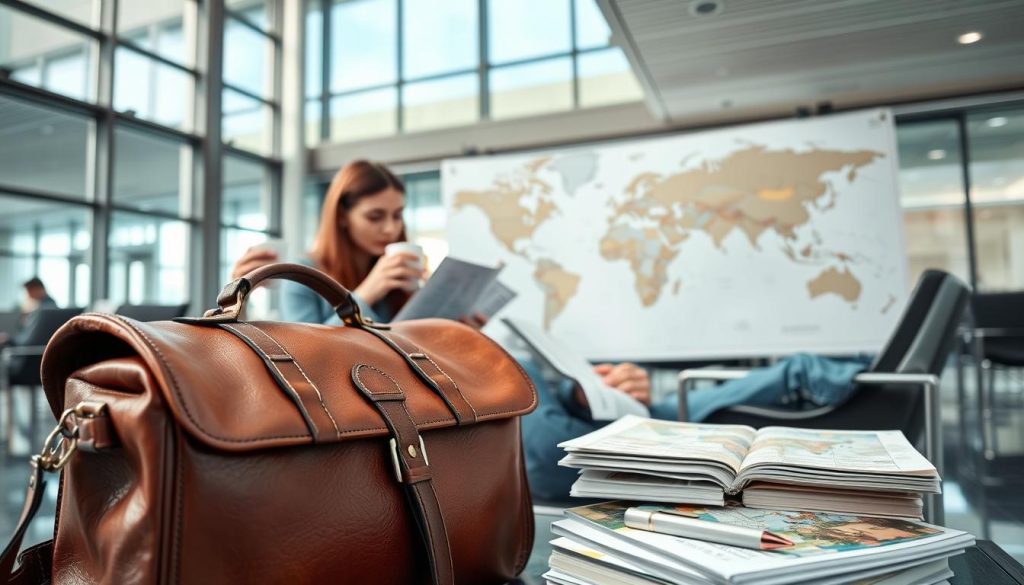
Choosing the Best Time to Visit
Spring (April to June) and autumn (September to November) are ideal for travel. The weather is mild, and cultural events like Nowruz (Afghan New Year) add vibrancy to your visit. Avoid extreme temperatures in summer and winter for a more comfortable experience.
Here’s how to decide the best time for your trip:
- Check historical weather patterns for your preferred way of travel.
- Align your visit with local festivals for cultural immersion.
- Consider crowd levels and accommodation availability.
Crafting an Itinerary that Fits Your Interests
Your itinerary should reflect your interests and pace. For history buffs, ancient sites and museums are a must. Adventure lovers can explore remote valleys and natural wonders. Balance your schedule to include both relaxation and exploration.
Tips for creating a personalized itinerary:
- Prioritize activities that excite every person in your group.
- Allocate time for spontaneous discoveries.
- Research local conditions to ensure safety and accessibility.
“A well-planned trip is not just about destinations—it’s about creating memories that last a lifetime.”
By aligning your travel plans with the best time and crafting an itinerary that suits your interests, you’ll make the most of your journey. Every way you explore will feel purposeful and rewarding.
Transportation Options and Getting Around
Navigating transportation in a new place can be both exciting and challenging. Whether you’re flying domestically or traveling overland, understanding your options ensures a smoother journey. Each destination offers unique modes of transport, and choosing the right one can make all the difference.
Domestic Flights and Taxi Services
Domestic flights are a convenient way to cover long distances quickly. They connect major cities and are often the safest option. When booking, ensure the airline meets international safety standards to avoid risks.
For shorter trips, taxis are widely available. Hiring a reliable driver is crucial, especially in unfamiliar areas. Many travelers recommend using services with local guides who know the roads and can navigate the situation effectively.
Overland Travel and Bus Lines
Overland travel offers a closer look at the landscape but requires vigilance. Bus lines operate between cities, but road conditions can be unpredictable. Always confirm routes and check the latest updates on the travel situation before departing.
Here are some tips for safe overland travel:
- Choose reputable bus companies with good safety records.
- Avoid traveling at night, as roads may be poorly lit.
- Stay updated on local news to avoid areas with heightened risks.
“Preparation is your best ally when navigating unfamiliar roads. Always have a backup plan and stay informed.”
By understanding your transportation options and staying aware of the situation, you can make informed decisions for each leg of your journey. Whether you’re flying or driving, safety and reliability should always be your top priorities.
Accommodation Choices Across Major Cities
Finding the right place to stay can make or break your travel experience. Whether you’re a woman traveling solo or a family seeking comfort, the options range from budget-friendly guesthouses to high-end hotels. Each choice offers a unique glimpse into local life and caters to different needs.
Budget Guesthouses and Local Stays
For travelers on a budget, guesthouses provide an authentic experience. These stays are often family-run, offering a warm and welcoming atmosphere. You’ll find basic amenities like clean rooms and shared bathrooms, perfect for those who prioritize affordability.
Safety is a key consideration, especially for women. Many guesthouses have secure entrances and helpful staff who can guide you. Staying here allows you to immerse yourself in daily life and connect with locals.
High-End Hotels and Expat Accommodations
If comfort and luxury are your priorities, high-end hotels are the way to go. These establishments cater to foreigners and expats, offering modern amenities like Wi-Fi, air conditioning, and private bathrooms. Many also have on-site restaurants and security measures for peace of mind.
These hotels are ideal for those who prefer a more familiar environment. They often provide services like airport transfers and guided tours, making your stay hassle-free. For women traveling alone, these options offer an added layer of security and convenience.
Choosing the right accommodation depends on your budget and comfort level. Whether you opt for a local guesthouse or a luxury hotel, both options ensure a memorable experience. By understanding the differences, you can make an informed decision that suits your travel style.
Culinary Adventures: Sampling Afghan Cuisine
The flavors of Afghan cuisine are as rich and diverse as its landscapes. From hearty stews to fragrant rice dishes, every meal is a celebration of tradition and taste. The mountain ranges and lush valleys provide the backdrop for a culinary journey that’s as much about the setting as it is about the food.
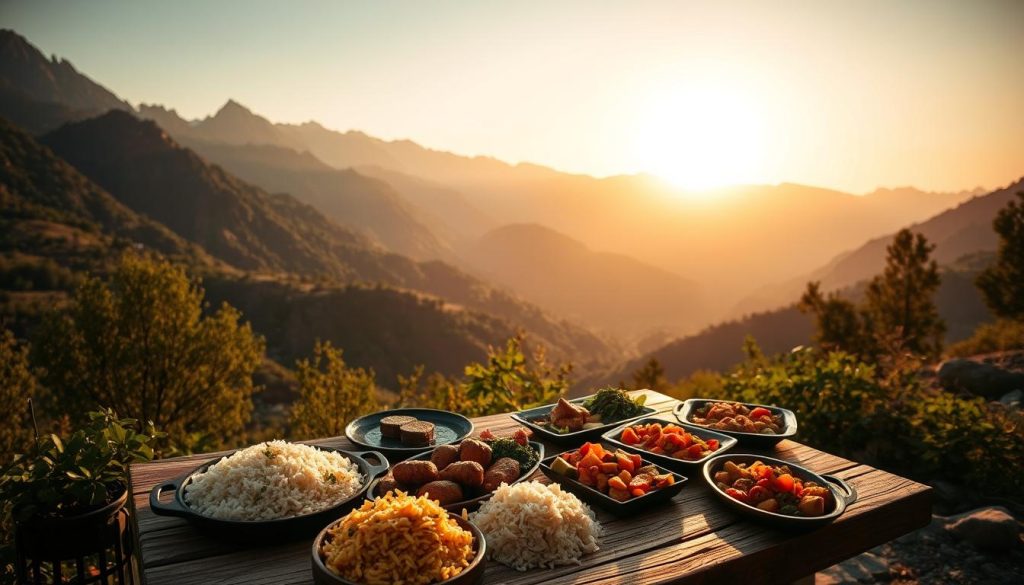
Must-Try Dishes and Local Delicacies
Start your culinary adventure with kabuli pulao, a fragrant rice dish topped with caramelized carrots and raisins. Another staple is the kebab, grilled to perfection and often served with fresh naan. These dishes are deeply rooted in the region’s history and reflect the resourcefulness of its people.
Don’t miss mantu, steamed dumplings filled with spiced meat and topped with yogurt and mint. For dessert, try firni, a creamy rice pudding flavored with cardamom and rosewater. Each bite offers a glimpse into the culinary heritage shaped by the mountains and valleys.
Dining Etiquette and Cultural Experiences
Dining in this region is a communal experience. Meals are often shared from a single platter, symbolizing unity and hospitality. When invited to a home, it’s customary to bring a small gift, such as sweets or tea. Accepting food graciously is a sign of respect, even if you only take a small portion.
Be mindful of local customs. Use your right hand for eating and passing items. Engage with your hosts by asking about the dishes and their significance. The air of warmth and generosity will make your dining experience unforgettable.
“Food is more than sustenance here—it’s a way to connect, share stories, and celebrate life.”
By embracing these traditions, you’ll not only savor the flavors but also gain a deeper appreciation for the culture. Whether you’re dining in a bustling city or a quiet valley, every meal is an opportunity to connect with the heart of this region.
Top Tourist Destinations and Hidden Gems
Exploring the heart of a country often means uncovering its most cherished landmarks and hidden treasures. From bustling cities to serene valleys, each site offers a unique perspective on its history and culture. Whether you’re drawn to iconic landmarks or off-the-beaten-path discoveries, this part of your journey will leave a lasting impression.
Exploring Kabul, Mazar-e Sharif, and Herat
Kabul, the capital, is a vibrant blend of history and modernity. Visit the National Museum to see artifacts that tell the story of the region. In Mazar-e Sharif, the Blue Mosque stands as a symbol of spiritual and architectural beauty. Herat, known for its ancient citadel, offers a glimpse into the past with its intricate tilework and bustling bazaars.
Each city has its own charm, and local hosts often share personal stories that bring these places to life. Whether you’re wandering through markets or admiring historic mosques, these urban centers are a must-see part of your trip.
Discovering Remote Valleys and Ancient Sites
Beyond the cities, the country’s remote valleys and ancient sites offer a different kind of beauty. The Bamiyan Valley, with its towering cliffs and historic Buddha niches, is a UNESCO World Heritage site that captivates visitors. The Panjshir Valley, surrounded by rugged mountains, is another hidden gem worth exploring.
These areas are often less crowded, allowing you to connect deeply with the landscape and its history. Local hosts in these regions can guide you to lesser-known spots, making your journey even more personal and memorable.
“The true essence of travel lies in discovering places that resonate with your soul and tell stories of the past.”
By visiting both iconic sites and hidden gems, you’ll gain a richer understanding of the country’s heritage. Each part of your adventure will add depth to your experience, creating memories that last a lifetime.
Afghanistan: Ultimate Travelers Guide to Currencies & Payments
Managing your money wisely is a key part of any travel experience. Over the years, travelers have shared their stories about navigating currency exchanges and payments. These insights can help you avoid common pitfalls and make informed decisions.
Tips on Money Exchanges and Using ATMs
Exchanging currency is often the first step in managing your finances. In major cities, you’ll find reliable money exchangers near markets and hotels. Always verify the exchange rate and compare rates at multiple locations. This ensures you get the best deal.
ATMs are available in urban areas, but they may not always be reliable. Withdraw cash during the day and in secure locations. Keep a small amount of local currency for emergencies. Travelers often recommend dividing your cash and storing it in multiple secure spots.
Here’s a quick checklist for using ATMs:
- Check for hidden fees before withdrawing.
- Use ATMs inside banks or well-lit areas.
- Notify your bank of your travel plans to avoid card blocks.
Handling Payment Methods Safely
Cash is king in many places, and carrying it safely is crucial. Use a money belt or hidden pouch to keep your funds secure. Avoid displaying large amounts of cash in public. This reduces the risk of theft.
Credit cards are accepted in some hotels and restaurants, but their use is limited. Always have a backup plan in case your card is declined. Travelers often suggest keeping a small emergency fund in U.S. dollars for such situations.
Here are some additional safety tips:
- Keep a photo of your passport and important documents.
- Use trusted exchangers and avoid street vendors.
- Stay aware of your surroundings when handling transactions.
“Preparation and awareness are your best tools for managing money safely during your travels.”
By following these tips, you’ll have a robust plan for handling your finances. Whether you’re exchanging currency or withdrawing cash, these strategies ensure a stress-free experience. Capture these moments with a photo to remember your journey.
Planning for Emergencies and Travel Insurance
Preparing for emergencies is a critical step in ensuring a safe and stress-free journey. Whether you’re exploring bustling markets or visiting iconic landmarks like the Friday Mosque, having a solid plan in place can make all the difference. This section provides practical tips to help you stay prepared and protected.

Establishing Emergency Contacts
Before you embark on your trip, take time to establish reliable local contacts. These could include your hotel staff, a trusted guide, or even fellow travelers. Knowing who to call in an emergency can save valuable time and reduce stress.
Familiarize yourself with local landmarks, such as the Friday Mosque or Chicken Street, which can serve as reference points in case you need assistance. Keep a list of emergency numbers, including local police (119) and your country’s embassy, easily accessible.
Choosing the Right Insurance Coverage
Travel insurance is a must for any trip, especially when visiting regions with unpredictable conditions. Look for comprehensive coverage that includes medical emergencies, trip cancellations, and evacuations. Policies typically cost 4% to 10% of your total trip expenses.
When selecting a plan, consider the following:
- Ensure it covers high-risk areas and activities.
- Check for preexisting condition coverage if needed.
- Compare quotes from multiple providers to find the best deal.
Being proactive with your insurance planning ensures you’re protected against unforeseen events. It’s a small investment that can save you from significant financial and emotional stress.
“Preparation is the key to handling emergencies effectively. A well-thought-out plan and reliable insurance can turn a crisis into a manageable situation.”
By taking these steps, you’ll be ready to navigate any challenges that arise during your travels. Whether you’re exploring Chicken Street or admiring the beauty of the Friday Mosque, you can focus on enjoying your experience with confidence.
Navigating Local Communication and Connectivity
Staying connected while traveling is essential for navigating new environments and ensuring a smooth experience. Whether you’re exploring bustling bazaars or visiting iconic mosques, having reliable communication tools can make your journey more enjoyable and stress-free.
Obtaining a Local SIM Card and Data Plans
One of the first steps to staying connected is getting a local SIM card. In major hubs like Kabul, you’ll find numerous vendors offering affordable options. Most require a passport for registration, so keep yours handy.
Data plans are widely available and cater to different needs. Whether you need a short-term plan for a week or a monthly package, there’s something for everyone. Here’s a quick comparison of popular providers:
| Provider | Data Plan | Cost (USD) |
|---|---|---|
| Roshan | 5GB/month | $10 |
| Etisalat | 10GB/month | $15 |
| MTN | Unlimited (30 days) | $20 |
These plans ensure you stay connected while exploring vibrant bazaars or near historic mosques.
Staying Connected in Remote Areas
In more remote regions, connectivity can be a challenge. However, some providers offer extended coverage that works even in less accessible areas. Always check the network map before heading out.
Here are some tips to maintain connectivity:
- Carry a portable Wi-Fi device for backup.
- Download offline maps and essential apps before traveling.
- Use Wi-Fi hotspots in cafes or hotels when available.
Staying connected not only helps you navigate but also ensures you can share your experiences in real-time. Whether you’re in a busy bazaar or near a serene mosque, these strategies keep you in touch with the world.
“Reliable communication is your lifeline in unfamiliar places. Stay connected to stay safe and informed.”
By following these steps, you’ll have a robust plan for maintaining communication throughout your journey. From bustling cities like Kabul to remote valleys, staying connected enhances every part of your adventure.
Experiencing Afghanistan’s Rich Heritage and Landscape
Immerse yourself in the rich cultural tapestry and stunning landscapes of this region. From ancient landmarks to breathtaking natural wonders, every step offers a chance to connect with history and adventure. Whether you’re exploring bustling cities or serene valleys, having a solid plan ensures that you make the most of your journey.
Visiting Historical and Cultural Landmarks
This region is home to some of the world’s most iconic historical sites. The Minaret of Jam, a UNESCO World Heritage site, stands as a testament to ancient craftsmanship. In the Bamiyan Valley, you’ll find remnants of towering Buddha statues carved into cliffs, offering a glimpse into the past.
When visiting these landmarks, it’s essential to have a detailed plan. Research opening hours, entry fees, and local guides to enhance your experience. Many sites are located in remote areas, so prepare for varying weather conditions and uneven ground.
Outdoor Adventures and Natural Wonders
For those seeking adventure, the rugged terrain offers endless opportunities. Trek through the Panjshir Valley, surrounded by towering mountains and lush greenery. Or explore the serene beauty of Band-e Amir, the country’s first national park, with its crystal-clear lakes and dramatic cliffs.
Visiting a local village can provide an authentic experience. Spend time on open ground, interacting with locals and learning about their traditions. These moments often become the highlight of any trip.
| Landmark/Activity | Location | Highlights |
|---|---|---|
| Minaret of Jam | Ghor Province | UNESCO site, intricate brickwork |
| Bamiyan Valley | Bamiyan Province | Buddha niches, stunning cliffs |
| Band-e Amir | Bamiyan Province | Lakes, hiking trails |
| Panjshir Valley | Panjshir Province | Mountains, scenic views |
By combining cultural tours with outdoor adventures, you’ll create a well-rounded experience. Whether you’re marveling at ancient ruins or trekking through pristine landscapes, every moment will leave a lasting impression.
“The true essence of travel lies in discovering places that resonate with your soul and tell stories of the past.”
Planning for Emergencies and Travel Insurance (Additional Considerations)
When traveling, having a solid emergency plan can make all the difference. Unexpected situations can arise, but being prepared ensures peace of mind. This section dives deeper into refining your plans and staying informed about local developments.
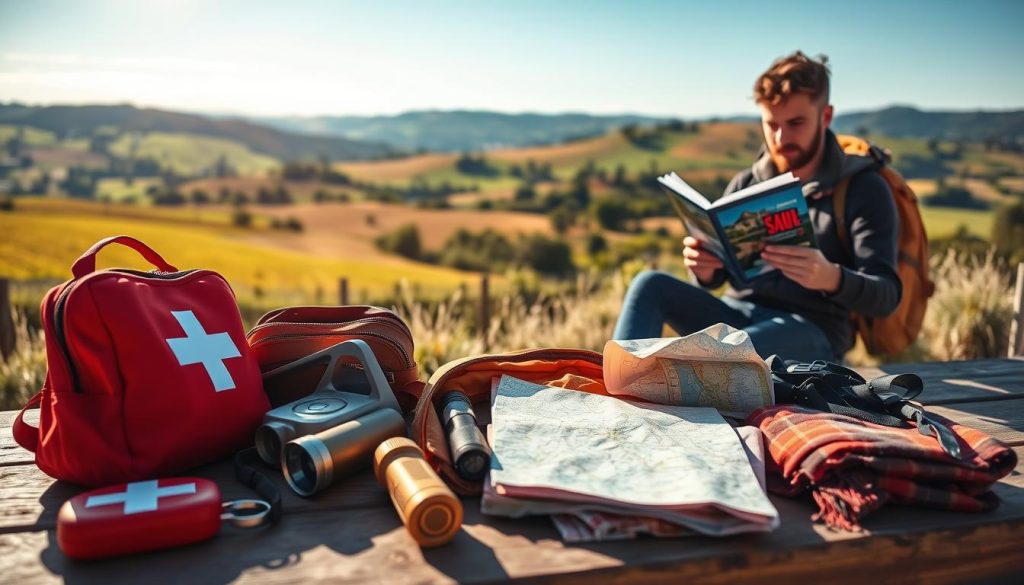
Fine-Tuning Your Emergency Plan
Start by ensuring you have proper permission for all travel activities. This includes permits for remote areas or specific sites. Local residents can be invaluable resources, offering insights and support during emergencies.
Create a detailed plan that includes emergency contacts, medical facilities, and evacuation routes. Share this plan with someone back home so they can assist if needed. A well-prepared man or woman traveler knows the importance of adaptability.
Here are some tips to refine your plan:
- Keep a copy of important documents in a secure location.
- Carry a basic first-aid kit and know how to use it.
- Identify safe zones and meeting points in case of separation.
Staying Informed on Local Developments
Local dynamics can change rapidly, so staying informed is crucial. Regularly check news updates and official advisories. Connect with locals who can provide real-time information about the current situation.
Social media and local forums are good sources of updates. However, verify information through trusted channels to avoid misinformation. Being proactive helps you adapt your plans and stay safe.
Here’s how to stay informed:
- Subscribe to local news outlets or travel advisories.
- Join online communities or forums for travelers in the area.
- Ask your home base for support in monitoring developments.
“Preparation and awareness are your best tools for handling emergencies effectively. A well-thought-out plan and reliable insurance can turn a crisis into a manageable situation.”
By fine-tuning your emergency plan and staying informed, you’ll be ready to handle any challenges. Whether you’re exploring remote areas or navigating bustling cities, these strategies ensure a safe and stress-free journey.
Final Thoughts and Next Steps
Every journey is unique, and the right preparation ensures a memorable experience. This guide has equipped you with essential tips for navigating roads, managing finances, and exploring remote regions like the Panjshir Valley. Whether you’re trekking through rugged landscapes or immersing yourself in local culture, these insights will help you stay safe and informed.
Recap and Actionable Tips
Start by planning your route carefully, especially when traveling on less familiar roads. Always carry cash and keep emergency contacts handy. For adventures in the Panjshir Valley, research local guides and weather conditions to ensure a smooth trip. These steps will help you make the most of your journey.
Resources for Continued Learning
For further exploration, consider joining travel forums or reading firsthand accounts from other adventurers. These resources can provide additional tips and inspiration for your next trip. With the right preparation, every journey becomes an opportunity to create lasting memories.
The above is subject to change.
Check back often to TRAVEL.COM for the latest travel tips and deals.
